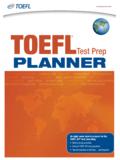Transcription of TCLP - Toxicity Characteristic Leaching Procedure Inc ...
1 V. Hazardous Waste characteristics According to The Code of Federal Regulations, Title 40, Paragraph , a substance is a hazardous waste if it exhibits any of the following 4 hazardous waste characteristics : TCLP, Ignitability, Corrosivity, or Reactivity. TCLP - Toxicity Characteristic Leaching Procedure In days of old, waste products were characterized as hazardous under the under the Toxicity rule. On November 7, 1986 the EPA revised the TCLP rule and promulgated (made known officially) as part of the land disposal restriction.
2 Like the EP TOX, the TCLP rule requires that the laboratory take the solids from a sample, c mix with a buffer solution at a ratio of 1:20 for 18 hours, filter the slurry, and analyze the In liquid portion for certain listed constituents. This Procedure was developed to simulate landfill conditions. Here, we are primarily concerned with any waste that could potentially contaminate the groundwater. , es The EPA Procedure number for the TCLP preparation is SW-846 Method 1311. 09 ori Ignitability A solid waste exhibits the characteristics of ignitability if the flashpoint is less than 60 C.
3 (140 F). The EPA procedures for ignitability are SW-846 Methods 1010 & 1030. Note that 20 rat 1010 applies only to liquids; 1030 can be used to determine the Characteristic of ignitability but is not mandated as the required method. ht o Reactivity ig b A waste exhibits the characteristics of reactivity if it has any of the following properties: yr La a) Normally unstable and readily undergoes violent change without detonating;. b) Reacts violently with water c) Forms potentially explosive mixtures with water d) When mixed with water, it generates toxic gases, vapors or fumes op O.
4 E) It is a cyanide- or sulfide-bearing waste which, when exposed to pH conditions between 2 and , can generate toxic gases, vapors or fumes C C. The Procedure for reactivity can be found in the SW-846 Methods manual, Chapter , EN. although the RCRA program has rescinded the use of these methods due to inherent issues with accuracy and reproducibility of the results. Corrosivity A waste exhibits the Characteristic of corrosivity if it is aqueous and has a pH less than or equal to 2 or greater than or equal to as determined by a pH meter, or exhibits a corrosivity to steel in excess of 635 mm/yr.
5 Corrosivity as pH can be found in SW-846 Methods 9040 and 9045; corrosivity to steel is SW-846 Method 1110. Page 88. Hazardous Waste characteristics , cont. TCLP Notes 1. The Procedure for the TCLP extraction states that if a waste contains less than solids, then no extraction Procedure is performed. The sample is filtered through the TCLP apparatus, but essentially the total and the TCLP values are identical. 2. A solid is defined as anything that will not pass through a micron filter. In some cases, heavy oil may be considered as 100% solid.
6 C . 3. The TCLP recommends the use of 100 grams of solid material for each extraction In performed. For example, should a sample contain 10% solids, we would be required to filter 10 liters of the solution to obtain 100 grams of solid. (Please keep this in mind when sampling.) Following the extraction process, the filtrate and original liquid portion , of the sample are mixed together prior to analysis. es 4. In some cases, it may be advantageous to perform a total analysis prior to performing a TCLP analysis.
7 If the total amount of a contaminant present is less than 09 ori the TCLP allowable limit, no TCLP extraction is required. 20 rat 5. The TCLP result cannot, ever, be greater than the total value. 6. In theory, the TCLP result cannot be greater than 1:20 of the total (assuming 100%. ht o solid), due to the dilution which occurs when extraction fluid is added to the sample. ig b 7. No estimates of total values can be made from knowing only the TCLP value. There yr La can be anywhere from 0 to 100 % of the constituent bound and never "leached.
8 " It is a common instance to see the total result be extremely high and a negligible TCLP result op O. 8. Due to the difficulty in separating m- and p- cresol, a listing for total cresol (D026). has been allowed by the rule. C C. 9. Some samples (especially oils and other petroleum wastes) may require multiple EN. sets of analyses to determine a final TCLP result. In cases where distinct phases are present in a sample and both will pass through the TCLP filtration process, each phase must be analyzed independently and the results combined mathematically to determine the final TCLP value.
9 (Keep this in mind when budgeting for analytical results associated with these matrices!). Page 89. Hazardous Waste characteristics , cont. TCLP vs. TOX. The most significant differences between the EP Toxicity test and the TCLP test are as follows: 1. The TCLP list has an additional 25 organic chemicals. (Originally 38 organics were on the list. Final action was postponed on 13 compounds which tended to break down during the extraction Procedure .). c . 2. Zero Headspace Extraction (ZHE) is employed for the analysis of 10 volatile organic In chemicals.
10 The entire extraction process from mixing, filtering and analyzing is done with the waste and filtrate coming in contact with minimal air. , 3. The TCLP requires use of a more acidic Leaching fluid for alkaline wastes. es 4. The extraction time is 18 hours for TCLP as opposed to 24 hours for EP-Tox. 09 ori The TCLP rule was finalized on March 29, 1990. All large quantity generators must classify their wastes according to the TCLP guidelines, small quantity generators were to have 20 rat complied by March 29, 1991.




